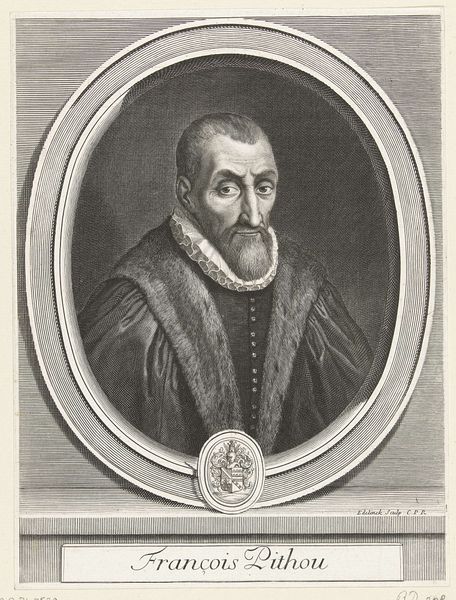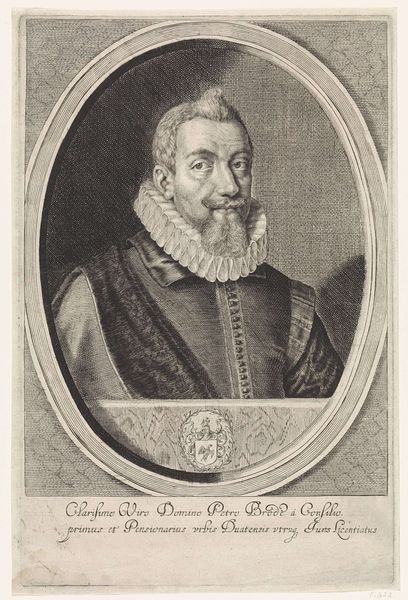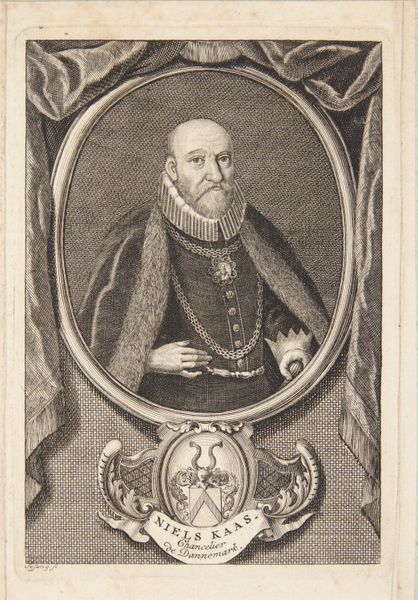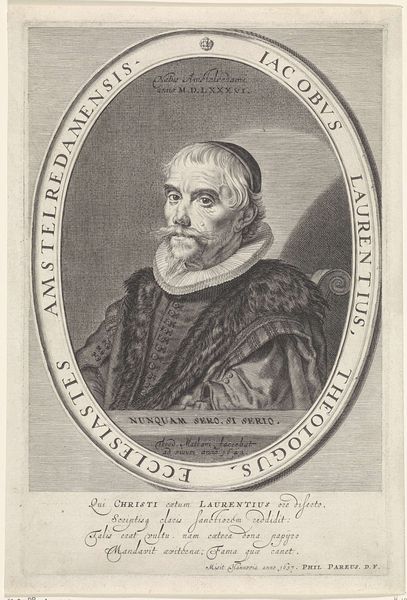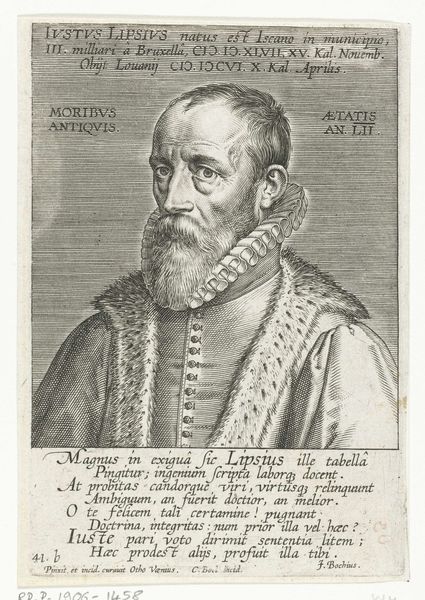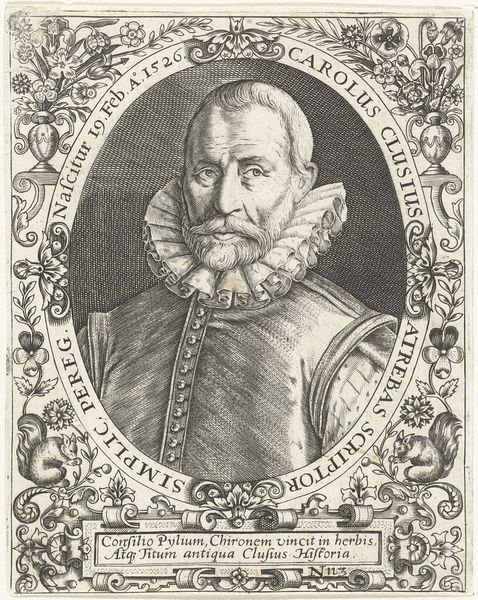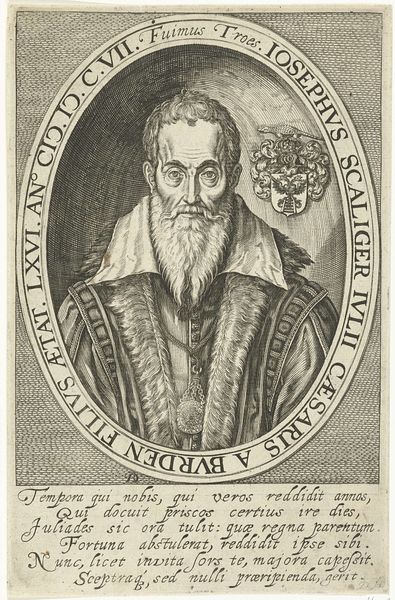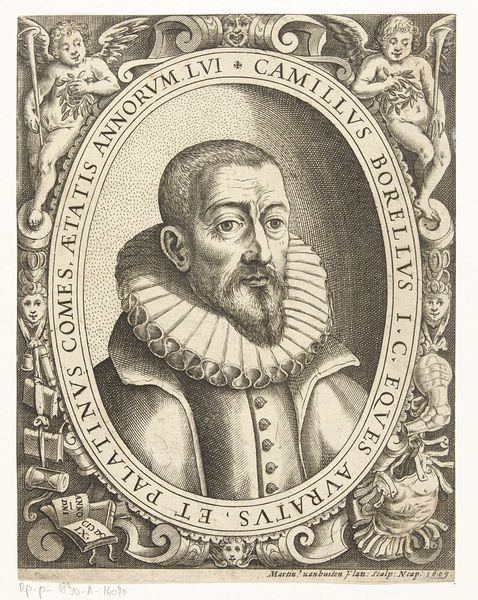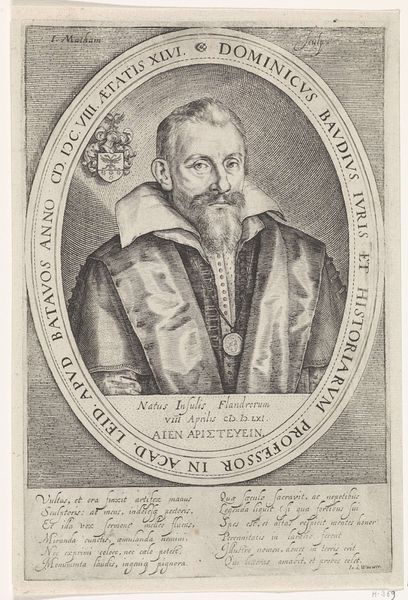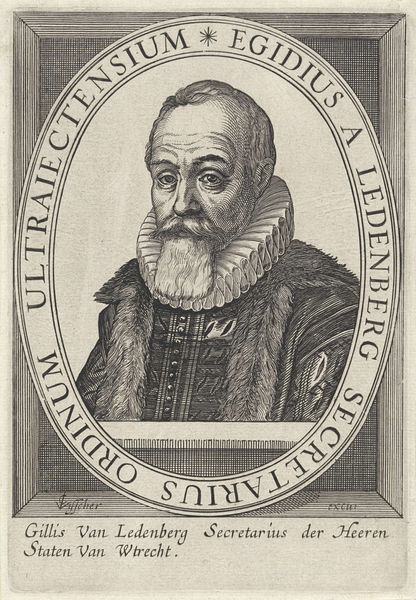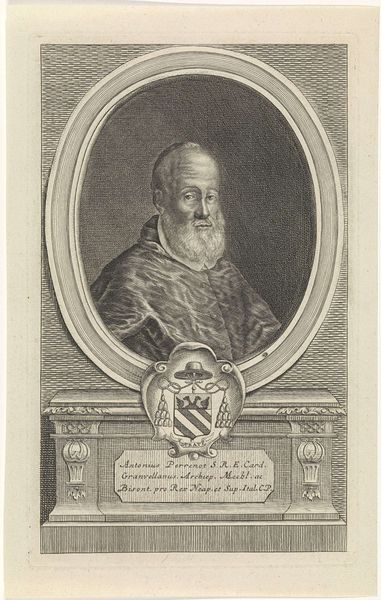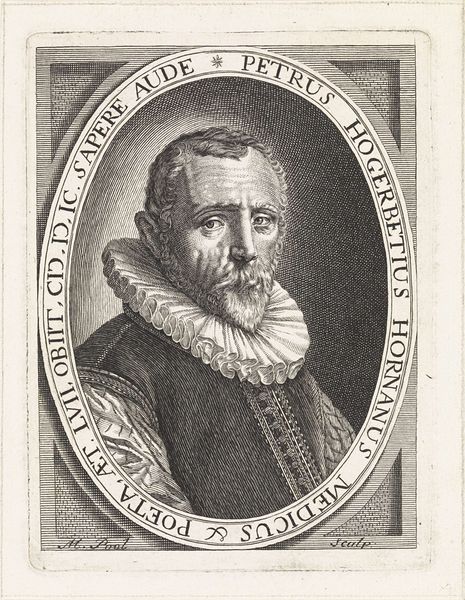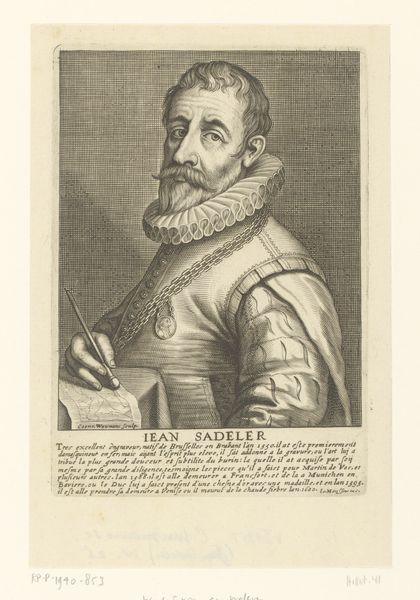
print, engraving
#
portrait
#
baroque
# print
#
old engraving style
#
history-painting
#
northern-renaissance
#
engraving
Dimensions: height 293 mm, width 192 mm
Copyright: Rijks Museum: Open Domain
Curator: This print, "Portret van Justus Lipsius," is attributed to Cornelis Galle I, and dates from sometime between 1615 and 1652. It’s an engraving, currently held at the Rijksmuseum. Editor: There's an intensity in the sitter's gaze. And it has that stark contrast common in engravings. It's formal but a little severe. Curator: As a print, this image allowed for wide dissemination of Lipsius' likeness. Considering the man himself, a noted scholar and humanist, the choice of engraving speaks to its purpose: the mass production of knowledge and reputation. Think about workshops, collaboration... what kind of paper, ink? These all would have determined the final quality, its survival. Editor: The classical imagery framing the portrait is fascinating – scrolls, fruit, that strange winged sun at the top…it creates this powerful aura of intellectual authority. The inclusion of Latin phrases further cements that image. Did the print serve to reinforce Lipsius’ position within intellectual circles of the time? Curator: Precisely. The print, beyond pure portraiture, operates as propaganda of sorts, imbuing Lipsius with attributes befitting a prominent public intellectual. Consider its placement – where were copies of this engraving displayed? What statement was being made to the viewer through its material presence? Editor: It's like a carefully constructed brand. Even down to the snake winding around the frame. It gives me the impression that even though these items feel so disconnected they’re trying to build authority. Curator: A kind of performative scholarship enacted via readily available materials and repeatable labour. You know the process wasn’t a luxury item; and even further that luxury items didn't last so widely as pieces made to circulate on newsprint or in pamphlets. Editor: It certainly brings a fresh perspective to the understanding of artistic and intellectual exchange in the early 17th century. It's also nice to reflect on the ways prints served as engines for projecting specific ideals and cementing public personas back in the day.
Comments
No comments
Be the first to comment and join the conversation on the ultimate creative platform.
